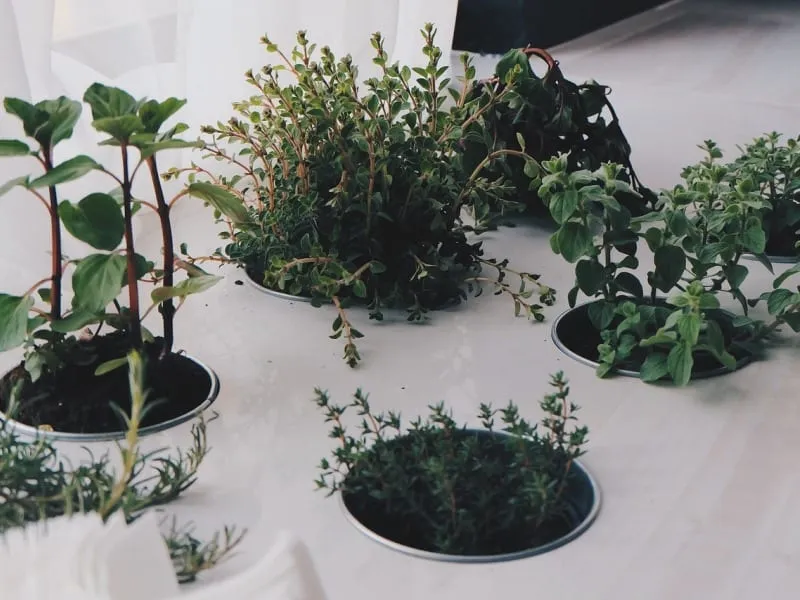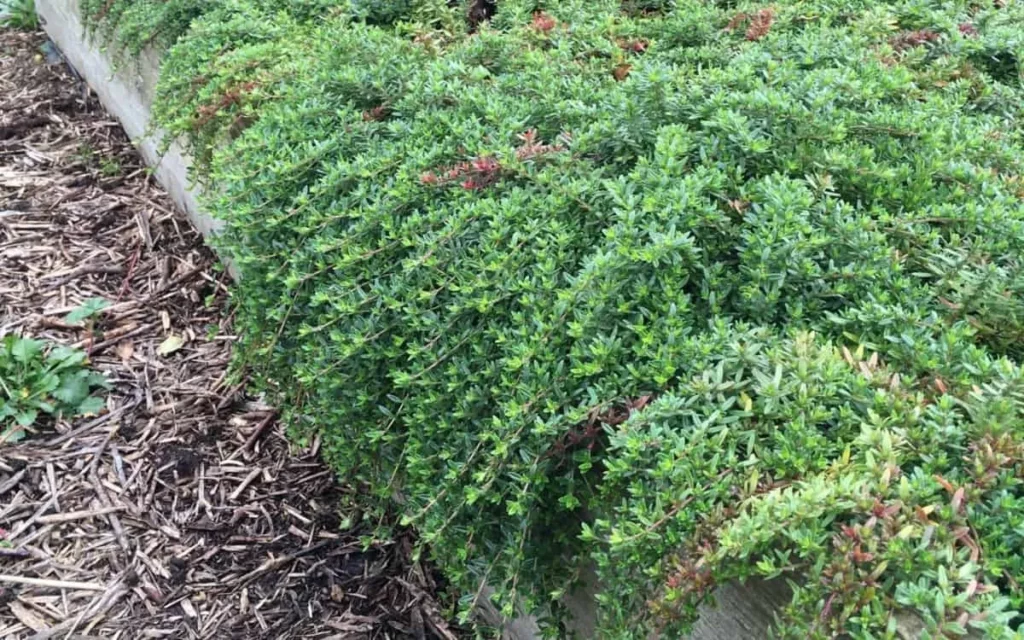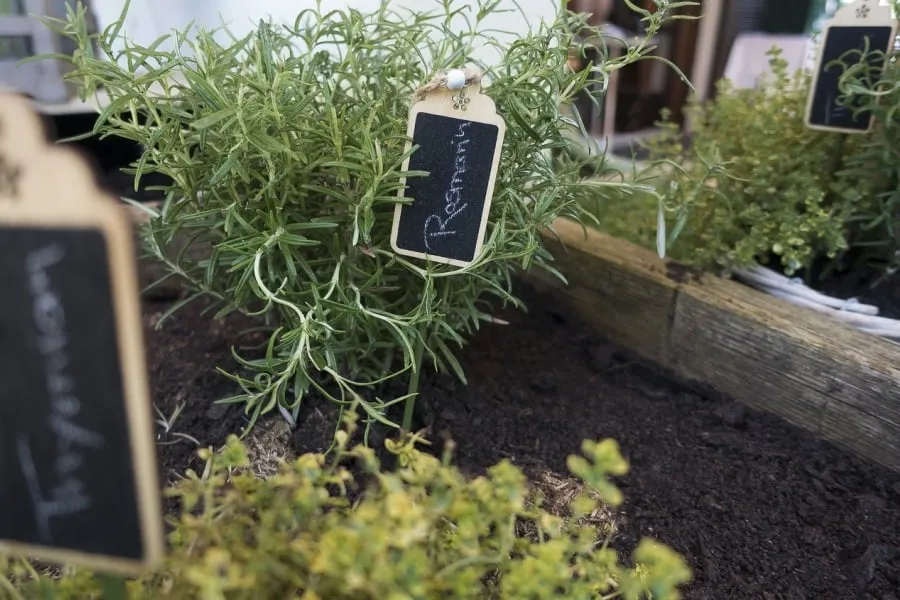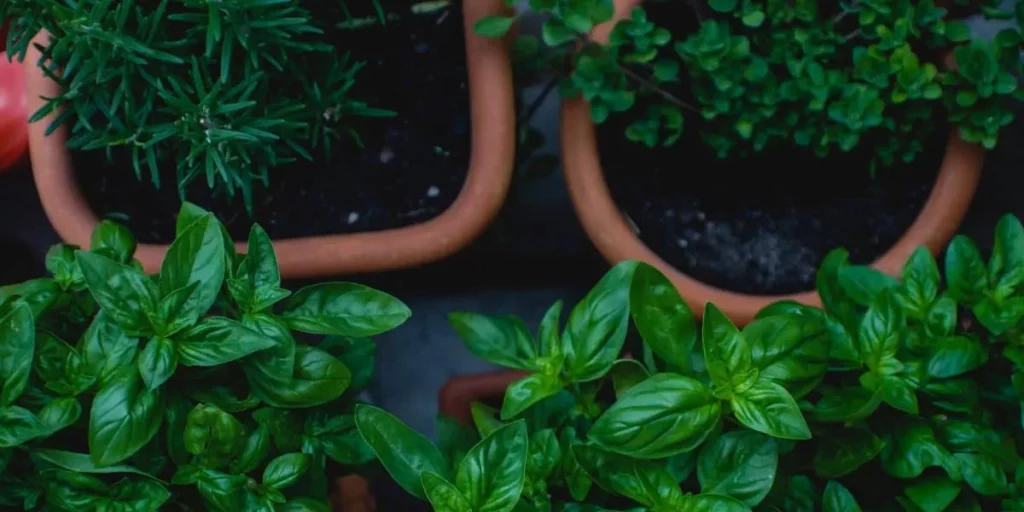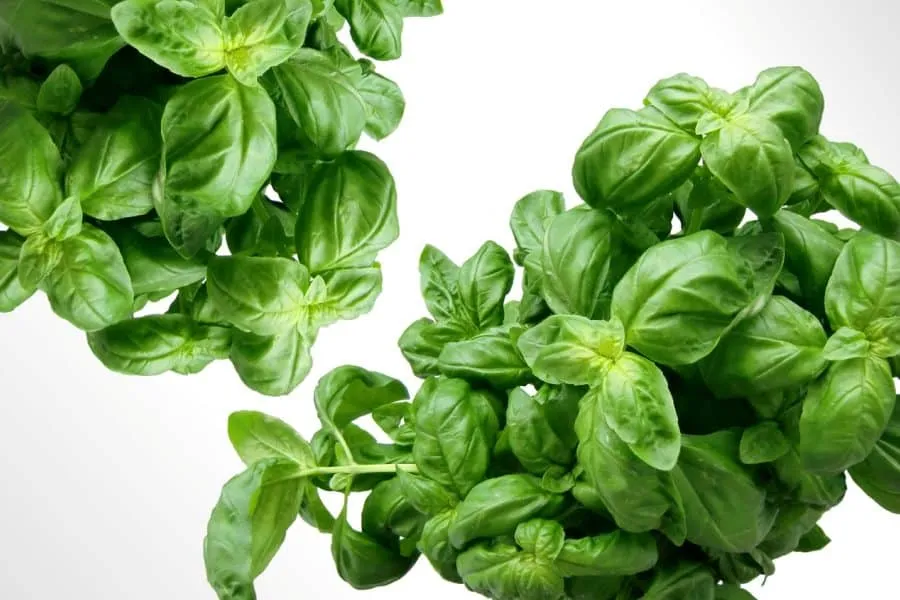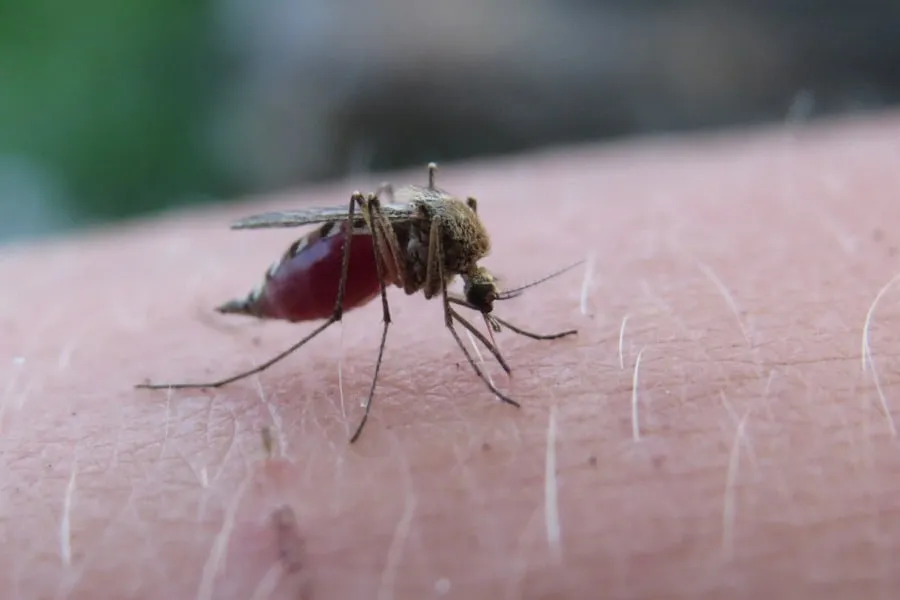Rosmarinus officinalis – “dew of the sea” is present in almost every herb garden in this country. Even in ancient times, rosemary was used as a spice and medicinal herb. Even today it is mainly used in the kitchen. The labiates can be planted out in the garden or cultivated in tubs and on the windowsill. Normally, rosemary is quite easy to care for. However, there are some things to consider, otherwise the plant can quickly suffer damage.
Contents
Rosemary gets yellow needles
As a rule, sporadic yellow needles are normal for rosemary, as well as for all other plants. There is no need to worry yet. Periodically, old leaves turn yellow and die. However, if then clearly several needles take on a yellow color and bald patches form on the otherwise evergreen half-shrub, then quick action is necessary to still save the plant. It is important now to find out the causes of discoloration. There are different possibilities like
- Care error
- wrong location
- wrong fertilization or
- pest infestation
In most cases, however, the half shrub is simply too wet. In other words, it is a care error, the plant was overwatered.
Rosmarinus officinalis is native to the Mediterranean region. There it grows partly on poor soils, on sunny rocky slopes, where not very much water reaches. Mainly it gets the necessary moisture for the most part from the air. It “drinks” the morning dew.
In addition, it has a widely branched root system that reaches deep into the earth. This allows the plant to draw nutrients and water from great depths. This fact should always be taken into account when watering, because rosemary does not require very much water.
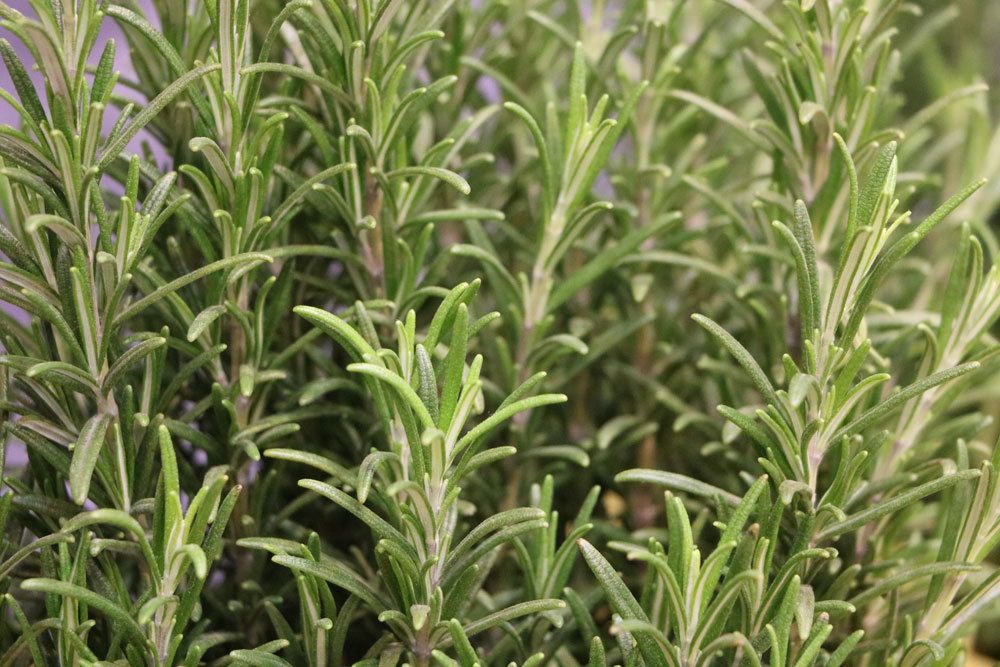
Tip: yellow discoloration of the needles on rosemary are the first signs of too much moisture. The soil must dry and then watering should be less.
The problem of “overwatering” occurs mainly when growing in pots and tubs. Here you can easily do the finger test. The soil should only feel moist, not wet. Furthermore, standing water in the saucer is always an indication of waterlogging. This is deadly for almost all plants. A few measures can be taken to remedy this situation
- Stop watering
- Let the soil dry
- if necessary repot in new and fresh substrate
- then water only moderately, if at all
Too much moisture usually causes rosemary foliage to turn yellow, then brown and dry.
Rosemary dries up
Sometimes it can be observed with Rosmarinus officinalis that the leaves turn brown and finally dry up. The watering can is then quickly reached for to give the shrub moisture. But be careful! Of course, here often prevails the opinion that withered leaves are a sign of water shortage and the plant now dies. However, here, too, in most cases, watered too much. In the case of outdoor rosemary, it may be due to the nature of the soil, for example, heavy soils store a lot of water. The result is waterlogging. If the mistake is not recognized, it will not be long before the rosemary dries up. Too much watering eventually causes the roots to begin to rot. As a result, water and nutrient transport can no longer take place within the plant. The above-ground parts of the plant wither and dry up.
Tip: If the rosemary leaves droop, this indicates a lack of water. This can occur especially in hot summer months and warm winters. Be careful as soon as yellow needles appear, stop watering.
Do not rule out pest infestation
In addition to care mistakes already made, pests should also be ruled out as causes of yellow discoloration of rosemary leaves and needles. Therefore, the plants should be regularly inspected for uninvited “visitors”. Usually these linger on the underside of the leaves, are only a few millimeters in size and are sometimes difficult to see with the naked eye. Damage can be caused by
- Spider mites
- Scale insects
- thrips and also
- fungi.
Most often, these occur at the end of winter, when plants have been overwintered indoors. Causes can be
- high temperatures
- low humidity
- dry heating air
Control should be done only with biological means, because the plant is intended for consumption. In most cases, increasing the humidity or a garlic broth will also help.
Tip: Rosemary planted in the garden usually requires little additional watering, only during prolonged and hot dry periods.
Save dried rosemary plant
Occasionally, Rosmarinus officinalis may look dried out even though it has been watered and the soil has not dried out completely. To save it, an examination of the roots is necessary. It is necessary to act quickly so that rescue is still possible.
- Dig up rosemary in the open ground
- lift out of the pot in case of pot culture
- Carefully remove soil from roots
- examine the roots for rot
- remove diseased, dried roots with a sharp knife
- prune roots generously
- shower remaining roots with warm water and dry carefully
- immerse roots in rooting hormone
- prevents fungal growth
- in open field choose another location
- if growing in pots, use a new pot with fresh substrate and drainage layer
- Cut back rosemary vigorously, but not into the old wood
- otherwise the plant will not sprout again
- water regularly, but little with luck, the withered rosemary plant will sprout again. However, it will take some time
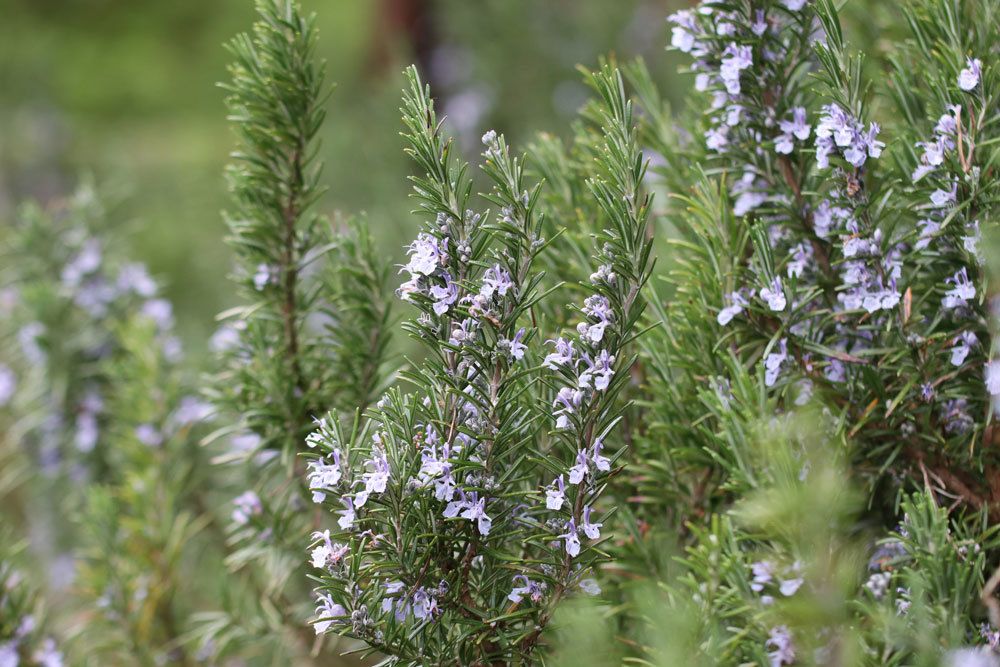
Preventive measures
Already at the time of planting rosemary should take certain measures, so as not to have to look for causes at a later stage, because the bush gets yellow and dried up leaves. Among other things, you should pay attention to several factors
- Watering
- Location
- Fertilization
- Proper watering
Watering is always very important for rosemary. They determine the prosperity of this rather low-maintenance plant. Normally you can not do much wrong, if you consider the following
- water is mainly absorbed through the above-ground parts of the plant
- always water from above, especially potted plants
- never let water stand in the saucer (waterlogging)
- roots should be as dry as possible
- water only when substrate has dried on the surface
- Plant can dry out for a short time, but it will not be harmed in the process
- water more frequently on hot days, especially potted plants
- outdoor plants need much less watering
- get water and nutrients from the depth via branched root system
- only in hot dry periods, when needles are shed, water additionally
- for potted plants, do a finger test
- water young plants and cuttings regularly but moderately
- makes growing easier
Alternatively, you can also “immerse” potted plants. To do this, remove plants from the pot and place the root ball in a bucket of water. Then allow to drain well. This method is also good for parched plants on hot days.
Tip: For new plantings, you can expect three to five gallons of water per shrub. Depending on sun exposure and rainfall, this watering is done once a week for the first three to four weeks. After that, reduce watering.
Correct choice of location
Rosemary needs a suitable location for healthy growth. It makes some demands on the soil. It loves
- sun
- rather lean, sandy, dry and well-drained soil
- neutral to alkaline pH
Heavy and loamy soils are rather poison for the evergreen shrub. These store a high proportion of water. Waterlogging quickly develops and consequences as already described can occur. Best suited would be a location on stone walls or in gravel beds in neighborhood with thyme, lavender or oregano, plants that have the same care needs.
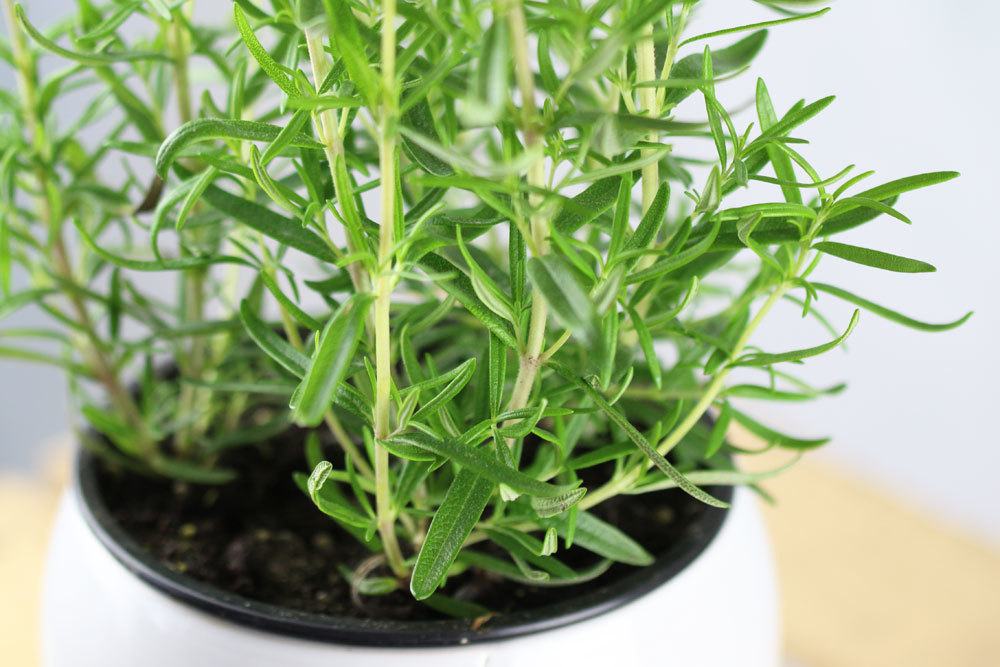
Caution when mulching
People also like to mulch the herb bed, usually with bark mulch. Care should be taken, because the Mediterranean plant does not like an additional layer of mulch. Especially bark mulch retains moisture. As a rule, the seasoning plant would then stand too wet. Better would be to adjust the conditions to those of the Mediterranean home. Instead of bark mulch, gravel, coarse gravel or small pebbles can be used.
Fertilization only in case of emergency
Sometimes overfertilization or lack of nutrients can cause plants to turn yellow. With this evergreen shrub, additional administration of nutrients is not necessary. It has a deep and widely branched root system. This means that nutrients and water can still be fetched from very deep layers of soil. To stimulate growth somewhat, a sparing application of organic fertilizer, such as compost or horn meal, can be made annually in the spring. Potted plants should receive very little fertilization unless they are repotted.



